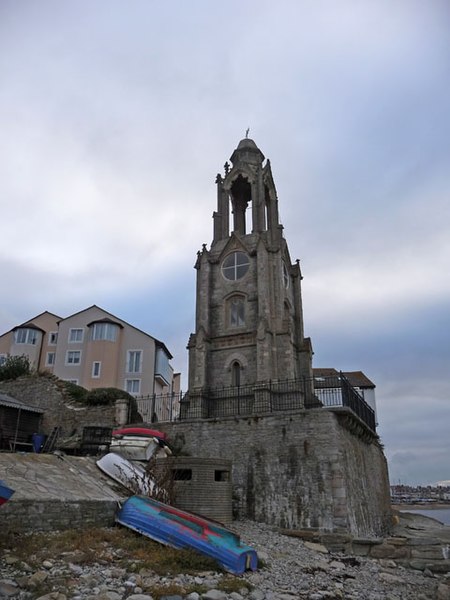Arthur Ashpitel (1807–1869) was an English architect. He trained under his father, William Hurst Ashpitel before setting up his own practice in 1842, and working in partnership with John Whichcord Jr. between 1850 and 1855. Ashpitel's works include the churches of St Barnabas, Homerton and St John the Evangelist, Blackheath.
Ashpitel's church of St Barnabas at Homerton
"Maidstone baths", a plate from Ashpitel's Observations on Baths and Wash-houses (1851)
The Wellington clock tower is a structure that stands on the seafront at Swanage in Dorset, England. It was originally built by the Commissioners for Lighting the West Division of Southwark at the southern end of London Bridge in 1854. It was intended as a memorial to the recently deceased Arthur Wellesley, 1st Duke of Wellington, though funds proved insufficient to provide a statue of the man at the top of the tower, as had been originally intended. It housed a clock with four faces that were illuminated from within and a small telegraph office. Within 10 years the structure was overshadowed by the construction of nearby railway structures and became an obstruction to traffic using the bridge. It was disassembled in 1867.
Wellington clock tower
A drawing showing the original design and site of the Wellington clock tower (including the statue of Wellington) from the Illustrated London News of 17 June 1854
Image: Swanage Clock Tower and Life Boat Station (geograph 2229310)





